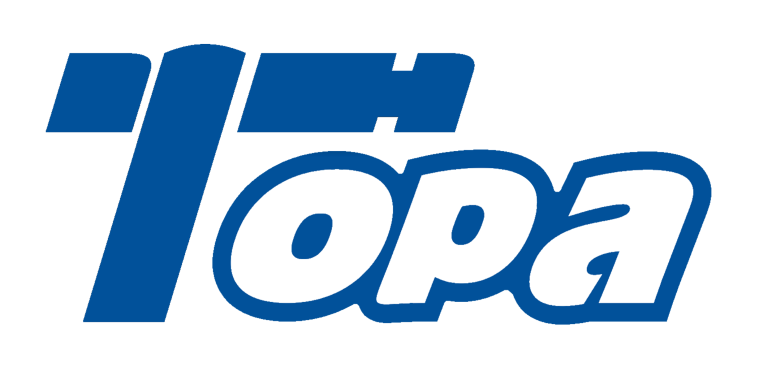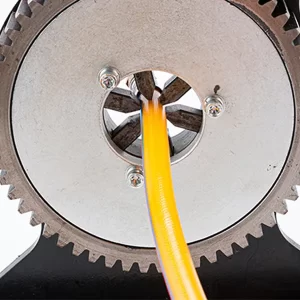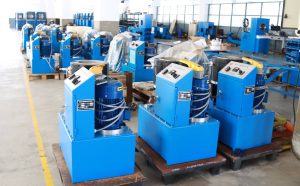Understanding the different types of hydraulic hose crimpers is essential for businesses working with hydraulic systems. Choosing the right crimper impacts efficiency, safety, and cost-effectiveness. This article dives into the key types of hydraulic hose crimpers, explaining their unique features, applications, and how to select the best one for your business needs. Whether you’re looking for manual, electric, pneumatic, or specialized crimpers, this guide will give you a clear picture of the options available and how they fit into various industrial workflows. But here’s the kicker… knowing these differences can dramatically improve your operational workflow.
1. What are the main categories of hydraulic hose crimpers?
Hydraulic hose crimpers come mainly in manual, electric, and pneumatic varieties, each suited for specific tasks and work environments. Manual crimpers rely on physical effort, electric crimpers use motors to automate the process, and pneumatic crimpers operate with compressed air, ideal for portability. Understanding these broad categories helps businesses pick the right tool for their needs. Ready for the good part? Each category has advantages and limitations, so matching the tool to the task saves time and money.
Manual crimpers work well for low-volume or maintenance tasks but can cause operator fatigue. Electric crimpers enhance precision and speed for medium to high volumes, while pneumatic crimpers excel in field applications with less access to power sources. Choosing the proper category requires assessing workflow demands, workspace, and budget.
Table: Main Hydraulic Hose Crimper Categories Comparison
| Crimper Type | Power Source | Ideal Use Case | Advantages | Limitations |
|---|---|---|---|---|
| Manual | Operator effort | Low volume, maintenance | Low cost, portable | Labor intensive, slower |
| Electric | Electric motor | Medium to high volume | Precise, faster | Requires power supply |
| Pneumatic | Compressed air | Field work, mobility | Portable, less effort | Needs air compressor |
2. How do manual hydraulic hose crimpers operate?
Manual hydraulic hose crimpers utilize mechanical force applied through a lever or pump to compress fittings onto hoses. They are simple, cost-effective machines requiring no electricity, making them suitable for on-site repairs or low-volume operations. But here’s the kicker… despite their simplicity, proper technique and strength are vital to achieve consistent crimp quality.
Manual crimpers are commonly used in repair shops or remote locations without access to power. For example, agricultural machinery repair crews often rely on manual crimpers to fix hydraulic leaks in the field. However, manual crimping can be laborious, especially for large-diameter hoses, leading to slower production rates and operator fatigue.
Table: Manual Crimper Features and Use Cases
| Feature | Description | Example Use Case |
|---|---|---|
| Mechanical force | Lever or pump activated | Remote repair jobs |
| No power needed | Operates without electricity | Emergency fixes |
| Portability | Lightweight and compact | Field maintenance |
3. What distinguishes electric hydraulic hose crimpers?
Electric hydraulic hose crimpers integrate an electric motor to automate the crimping process, offering more consistency, speed, and ease of use. This is where it gets interesting… many electric models allow programmable crimping cycles, reducing human error and improving repeatability in high-volume settings.
Industries such as manufacturing and automotive workshops favor electric crimpers due to their reliability and efficiency. Case studies show that switching from manual to electric crimpers increased production rates by up to 40%, while improving joint integrity and operator comfort.
Table: Electric Crimper Advantages
| Advantage | Impact | Industry Example |
|---|---|---|
| Automation | Consistent crimps | Automotive assembly |
| Speed | Increased throughput | Hydraulic component plants |
| Programmability | Reduced errors | Industrial manufacturing |
4. How do pneumatic hydraulic hose crimpers function?
Pneumatic hydraulic hose crimpers utilize compressed air to drive the crimping mechanism, combining portability with automated power. Ready for the good part? These machines allow users to perform high-quality crimps on-site without relying on electrical power, perfect for field service technicians.
Commonly used in construction, oil & gas, and agricultural sectors, pneumatic crimpers balance ease of use with decent production capacity. However, they require access to an air compressor, which can be a limitation depending on the work environment.
Table: Pneumatic Crimper Characteristics
| Feature | Description | Typical Industry Use |
|---|---|---|
| Air-powered | Runs on compressed air | Construction, agriculture |
| Portable | Easier to transport | Field repair jobs |
| Moderate speed | Faster than manual | Oilfield service |
5. What features define stationary hydraulic hose crimpers?
Stationary crimpers are fixed installations designed for high-volume and heavy-duty crimping tasks. They are commonly found in manufacturing plants where hose assemblies are produced continuously. But here’s the kicker… their robust design supports larger hose diameters and higher pressures, providing superior performance for demanding applications.
These machines often come with integrated automation and data tracking capabilities, allowing precise control and quality assurance. Industries such as aerospace and heavy machinery manufacturing depend on stationary crimpers for reliability and consistency.
Table: Stationary Crimper Specifications
| Specification | Typical Value | Benefit |
|---|---|---|
| Hose diameter capacity | Up to 4 inches | Handles large hoses |
| Automation level | High | Quality consistency |
| Production volume | High | Suited for mass production |
6. How are portable hydraulic hose crimpers different?
Portable crimpers are compact and lightweight, designed for mobility without sacrificing crimp quality. What’s the real story? These machines empower technicians to perform quick repairs on-site, reducing downtime significantly.
They usually offer fewer automation features compared to stationary crimpers but excel in flexibility and accessibility. For example, utility companies rely heavily on portable crimpers to maintain hydraulic systems across dispersed locations.
Table: Portable Crimper Benefits
| Benefit | Description | Application Example |
|---|---|---|
| Mobility | Easy to transport | Field repairs |
| Quick setup | Minimal preparation | Emergency maintenance |
| Versatility | Handles multiple hose sizes | Utility and rental services |
7. What are the benefits of semi-automatic hydraulic hose crimpers?
Semi-automatic crimpers offer a blend of user control and automated functions. Here’s the kicker… operators initiate the crimp cycle, while the machine controls the force and duration, improving uniformity without losing flexibility.
These crimpers strike a balance between cost and performance, making them popular in medium-sized workshops. Case studies reveal that semi-automatic crimpers reduce errors by 25% while boosting throughput in service centers.
Table: Semi-Automatic Crimper Features
| Feature | Benefit | Use Case |
|---|---|---|
| User-initiated cycles | Operator control | Custom jobs |
| Automated pressure | Consistent crimps | Repair shops |
| Moderate cost | Affordable automation | Medium volume |
8. What sets fully automatic hydraulic hose crimpers apart?
Fully automatic crimpers run complete crimping cycles without operator intervention, using pre-programmed settings. Ready for the good part? This leads to the highest consistency and productivity, ideal for mass production environments.
They incorporate features such as automatic die changing, digital pressure control, and integrated quality checks. Large hydraulic assembly plants adopt fully automatic crimpers to meet stringent industry standards.
Table: Fully Automatic Crimper Advantages
| Advantage | Description | Industry Application |
|---|---|---|
| Automation | Hands-free operation | Mass production |
| Precision | Digital controls | Aerospace components |
| Quality assurance | Integrated inspections | OEM manufacturing |
9. How do custom hydraulic hose crimpers fit industry needs?
Custom crimpers are designed to meet specialized requirements, often integrating with unique production lines or handling uncommon hose sizes. But here’s the kicker… customization offers businesses competitive advantages by tailoring equipment to specific workflows.
Companies in niche sectors such as military or medical device manufacturing frequently opt for custom crimpers to meet unique specs and compliance needs. Collaborative design processes ensure these machines deliver optimal performance.
Table: Custom Crimper Features
| Feature | Benefit | Industry Example |
|---|---|---|
| Tailored design | Fits unique hoses | Military manufacturing |
| Integrated controls | Workflow efficiency | Medical devices |
| Compliance support | Meets standards | Specialized sectors |
10. What role does die size and compatibility play across types?
Die compatibility is crucial for ensuring a hydraulic hose crimper can work with multiple hose diameters and fittings. What’s the real story? Machines with interchangeable dies provide flexibility, reducing the need for multiple tools.
This capability enhances operational efficiency by minimizing downtime when switching hose types. Industries that handle diverse hydraulic systems, such as industrial maintenance services, highly value die compatibility.
Table: Die Size and Compatibility
| Die Size Range | Compatibility | Benefit |
|---|---|---|
| Small to large | Interchangeable dies | Versatile usage |
| Quick change | Reduced downtime | Increased productivity |
| Universal fit | Supports various fittings | Cost savings |
11. How do power sources affect hydraulic hose crimper selection?
Choosing between electric, hydraulic, or pneumatic power depends on the work environment and application. But here’s the kicker… power source influences machine performance, portability, and operating costs.
Electric crimpers excel indoors with stable power supplies, pneumatic crimpers suit mobile applications, and hydraulic power offers robust performance for heavy-duty tasks. Business decisions must weigh energy efficiency and site logistics.
Table: Power Source Comparison
| Power Source | Best Use | Pros | Cons |
|---|---|---|---|
| Electric | Workshop | Precise, fast | Requires power outlet |
| Pneumatic | Fieldwork | Portable | Needs air compressor |
| Hydraulic | Heavy duty | High force | Complex maintenance |
12. How does maintenance differ among crimper types?
Maintenance varies widely based on crimper complexity and usage. Ready for the good part? Manual crimpers need minimal maintenance but require frequent checks for wear, while automatic crimpers need regular software updates and hydraulic system care.
Proper maintenance reduces downtime and extends machine life. Case studies show that businesses with scheduled preventive maintenance programs cut repair costs by 30%.
Table: Maintenance Needs by Crimper Type
| Crimper Type | Maintenance Frequency | Key Tasks | Impact |
|---|---|---|---|
| Manual | Low | Lubrication, inspection | Low cost |
| Semi-automatic | Medium | Calibration, hydraulic check | Moderate cost |
| Automatic | High | Software updates, system diagnostics | Higher cost |
13. What safety considerations vary by hydraulic hose crimper type?
Safety features differ based on automation and power source. What’s the real story? Fully automatic crimpers incorporate advanced safeguards like emergency stops and safety guards, while manual crimpers rely more on operator skill.
Workplace safety standards mandate protective measures to prevent accidents. Businesses investing in safer crimpers reduce injury risks and associated costs.
Table: Safety Features by Crimper Type
| Crimper Type | Safety Feature | Description | Benefit |
|---|---|---|---|
| Manual | Operator controls | Requires training | User responsibility |
| Semi-automatic | Emergency stop | Quick shutdown | Injury prevention |
| Automatic | Safety interlocks | Prevents misuse | Enhanced safety |
14. How do pricing and total cost of ownership compare?
Initial price doesn’t tell the whole story. But here’s the kicker… operational costs, maintenance, and downtime significantly affect total cost of ownership. Manual crimpers have low upfront costs but higher labor expenses.
Electric and automatic crimpers involve higher investments but often reduce operational costs through efficiency gains. Long-term savings often justify the initial price for high-volume operations.
Table: Cost Comparison
| Crimper Type | Initial Cost | Operating Cost | Maintenance Cost | ROI Potential |
|---|---|---|---|---|
| Manual | Low | High labor | Low | Moderate |
| Electric | Medium | Moderate | Moderate | High |
| Automatic | High | Low | High | Very high |
15. How can businesses choose the right hydraulic hose crimper type?
Choosing the right crimper involves assessing production volume, hose specifications, budget, and required automation. Ready for the good part? A thorough needs analysis combined with expert consultation ensures optimal investment.
Case examples show companies saving thousands by selecting machines tailored to their workflows. Future-proofing with scalable features helps businesses adapt as demands evolve.
Table: Decision Factors for Crimper Selection
| Factor | Considerations | Impact on Choice |
|---|---|---|
| Production volume | Low to high | Automation level |
| Hose size | Diameter range | Die compatibility |
| Budget | Initial and ongoing | Type of crimper |
| Work environment | Field or workshop | Portability needs |
Conclusion
Hydraulic hose crimpers come in diverse types, each tailored to specific operational needs. From manual to fully automatic, understanding their unique features helps businesses optimize efficiency, safety, and cost. Considering factors such as power source, die compatibility, and maintenance requirements guides better investment decisions. Whether for field repairs or mass production, the right crimper enhances quality and productivity. Choosing wisely today prepares your operations for future challenges and growth. But here’s the kicker… knowing these options means you’re ready to make smart, confident decisions.
FAQ
Q1: What is a hydraulic hose crimper?
A hydraulic hose crimper is a machine that attaches fittings to hydraulic hoses by compressing sleeves securely, ensuring leak-proof connections.
Q2: How does an electric hydraulic hose crimper work?
It uses an electric motor to power hydraulic pressure, automating the crimping process for consistent, fast results.
Q3: What are the benefits of portable hydraulic hose crimpers?
Portable crimpers allow easy on-site repairs with lightweight design and reasonable power, ideal for field technicians.
Q4: Why is die compatibility important?
Die compatibility lets one crimper handle various hose sizes and fittings, enhancing versatility and reducing downtime.
Q5: How do fully automatic hydraulic hose crimpers improve production?
They offer programmable, hands-free operation with consistent quality, suited for high-volume manufacturing.




